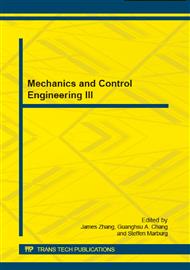p.305
p.313
p.320
p.325
p.329
p.336
p.341
p.345
p.350
Design Process of a Master Controller for Electric Omnidirectional Platforms
Abstract:
The need vehicles able to move or park easily in narrow or cluttered halls, along with the progress in matter of motors, batteries and controllers applied to electric vehicles has supported the development of electric omnidirectional vehicles, in robotics, industrial and health fields.The solutions currently found in the market generally integrate all the electrical/mechanical components and do not offer an option of a master controller compatible with different omnidirectional platforms.A master controller for electric omnidirectional platforms adaptable to a wide range of usage conditions and mechanical power requirements, would be an interesting component for design purposes at academic level, where engineering students could understand how design variables are related to the component selection.This article presents the design process of a master controller for this kind of vehicles and the procedure for determining its parameters and the specifications for electric motors required on different platforms that will have different mechanical power requirements and use conditions. First, specific characteristic for a general platform have been defined, the kinematic behavior has been characterized and next, a simulation model has been configured and tested with a real platform in order to identify the real behavior or the master controller.
Info:
Periodical:
Pages:
329-335
Citation:
Online since:
December 2014
Authors:
Price:
Сopyright:
© 2015 Trans Tech Publications Ltd. All Rights Reserved
Share:
Citation:


